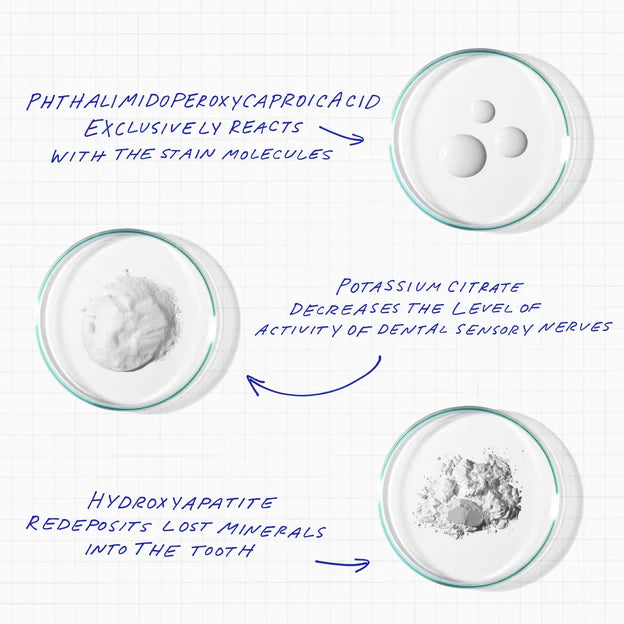What is teeth whitening?
And how does the teeth whitening process work?
Tooth discoloration and staining are the result of various dyes and pigments adhering to the tooth's organic matter. These stains are typically removed using two methods: physical removal and chemical bleaching.
Physical removal targets surface stains (daily surface stains) using an abrasive method. Chemical whitening targets both surface stains and embedded stains (stains embedded in the tooth enamel), making it the most common and effective method of teeth whitening.
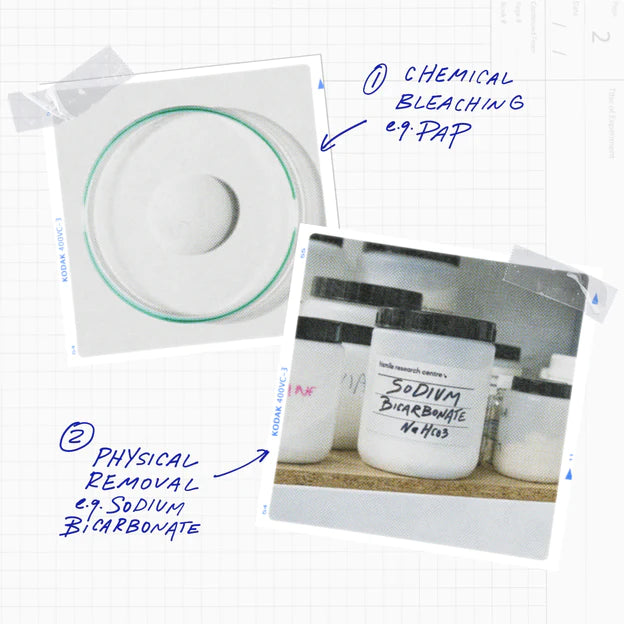
So how does chemical whitening remove stains from teeth?
Chemical teeth whitening oxidizes stains and alters the molecules responsible for maintaining color. Simply put, whitening agents penetrate tooth enamel and break these molecules down into smaller, simpler forms. The smaller the molecule, the lighter the color, resulting in an overall whiter tooth appearance.
Some common bleaching agents are hydrogen peroxide, carbamide peroxide, and phthalimidoperoxycaproic acid (we call it PAP+ for short).
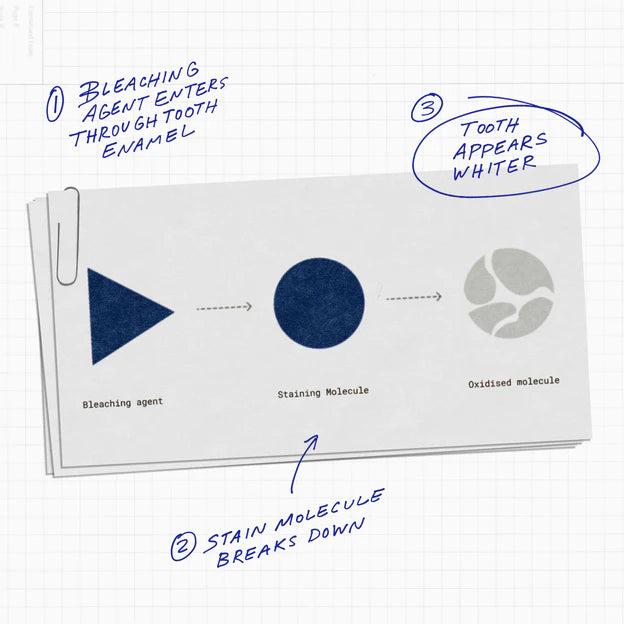
What is the difference between peroxide and PAP+?
Both PAP+ whitening and hydrogen peroxide teeth whitening treatments use oxidizing action to remove stains and brighten the appearance of teeth.
As part of this process, peroxide releases something known as free radicals. Free radicals readily attack organic molecules to reduce discoloration, but they can also cause unwanted side effects such as sensitivity, gum irritation, and demineralization.
PAP+ reacts similarly to dental stains, but without releasing free radicals. This means the molecules responsible for discoloration are safely broken down, without the risk of sensitivity, pain, or damage.
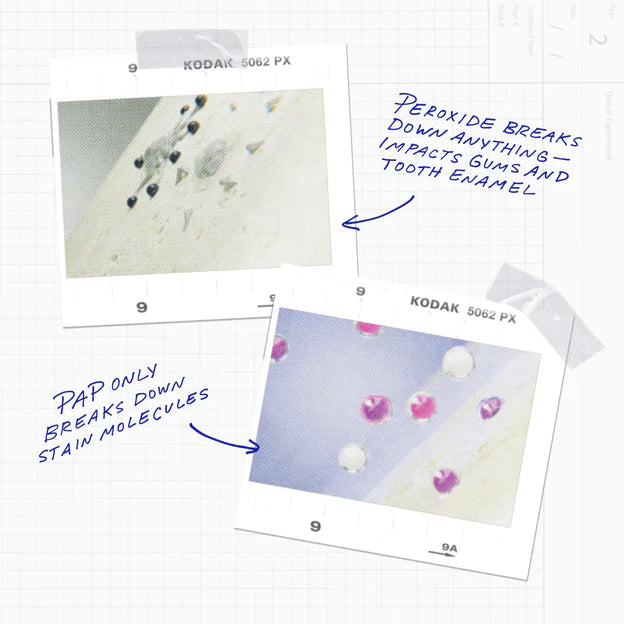
Why isn't PAP+ used more?
Most dentists continue to use hydrogen peroxide-based whitening treatments in their offices, as professional in-office application is likely to limit the side effects of free radical oxidation. However, with the increased accessibility and popularity of at-home hydrogen peroxide products, the safety of these treatments becomes questionable at best.
The use of PAP+ has not been widely explored by dentists, possibly due to its difficult formulation and stability. The higher the pH level of PAP+, the greater its effectiveness. Unfortunately, this means that the formula loses its effectiveness after a short storage period.
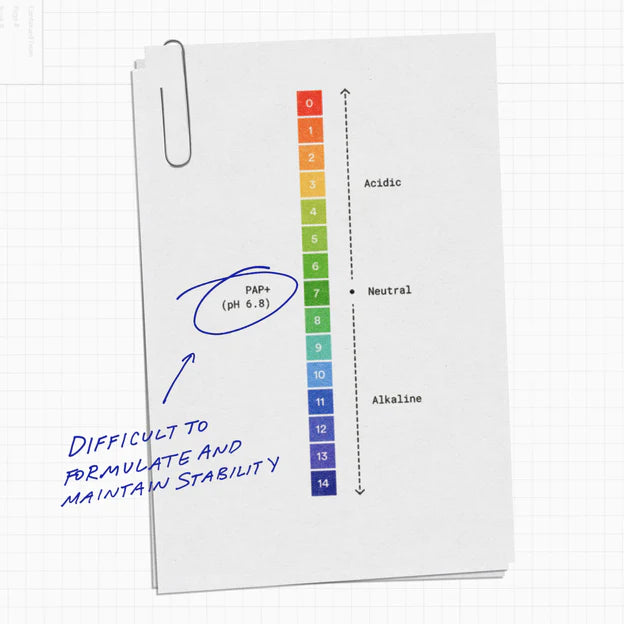
What makes PAP+ special?
We've spent years perfecting the optimal formulation process that maximizes the benefits of PAP+ while maintaining its stability. The result is PAP+, a formula that effectively whitens teeth without any of the unwanted side effects.
We've also added other ingredients to PAP+ that remineralize teeth and combat the effects of pre-existing sensitivity, such as potassium citrate and hydroxyapatite.
